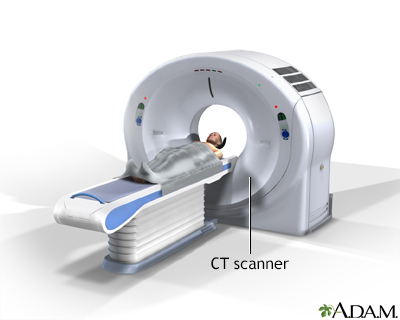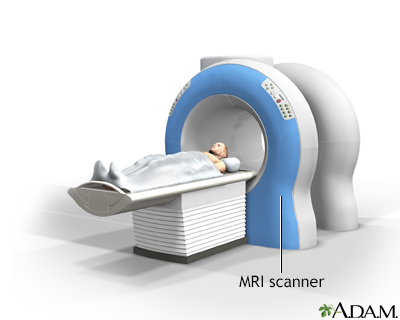The Importance of Colorectal Cancer Screening: How Early Detection Saves Lives
Colorectal cancer ranks as the second leading cause of cancer-related deaths in the United States. Referred to as a “silent killer” due to its lack of…

Update your location to show providers, locations, and services closest to you.
Virtual colonoscopy (VC) is an imaging or x-ray test that looks for cancer, polyps, or other disease in the large intestine (colon). The medical name of this test is CT colonography.
Colonoscopy - virtual; CT colonography; Computed tomographic colonography; Colography - virtual
VC is different from regular colonoscopy. Regular colonoscopy uses a long, lighted tool called a colonoscope that is inserted into the rectum and large intestine.
VC is done in the radiology department of a hospital or medical center. No sedatives are needed and no colonoscope is used.
The exam is done as follows:
A computer combines all the images to form three-dimensional pictures of the colon. The doctor can view the images on a video monitor.
Your bowels need to be completely empty and clean for the exam. A problem in your large intestine that needs to be treated may be missed if your intestines are not cleaned out.
Your health care provider will give you the steps for cleansing your bowel. This is called bowel preparation. Steps may include:
You need to drink plenty of clear liquids for 1 to 3 days before the test. Examples of clear liquids are:
Keep taking your medicines unless your doctor tells you otherwise.
You will need to ask your provider if you need to stop taking iron pills or liquids a few days before the test, unless your provider tells you it is OK to continue. Iron can make your stool dark black. This makes it harder for the doctor to view inside your bowel.
CT and MRI scanners are very sensitive to metals. Do not wear jewelry the day of your exam. You will be asked to change out of your street clothes and wear a hospital gown for the procedure.
The x-rays are painless. Pumping air into the colon may cause cramping or gas pains.
After the exam:
VC may be done for the following reasons:
Your doctor may want to do a regular colonoscopy instead of a VC. The reason is that VC does not allow the doctor to remove tissue samples or polyps.
Other times, a VC is done if your doctor was not able to move the flexible tube all the way through the colon during a regular colonoscopy.
Normal findings are images of a healthy intestinal tract.
Abnormal test results may mean any of the following:
Regular colonoscopy may be done (on a different day) after a VC if:
Risks of VC include:
Differences between virtual and conventional colonoscopy include:


Garber JJ, Chung DC. Colonic polyps and polyposis syndromes. In: Feldman M, Friedman LS, Brandt LJ, eds. Sleisenger and Fordtran's Gastrointestinal and Liver Disease. 11th ed. Philadelphia, PA: Elsevier; 2021:chap 126.
Kim DH, Pickhardt PJ. Computed tomography colonography. In: Gore RM, Levine MS, eds. Textbook of Gastrointestinal Radiology. 4th ed. Philadelphia, PA: Elsevier Saunders; 2015:chap 53.
Lawler M, Johnston B, Van Schaeybroeck S, et al. Colorectal cancer. In: Niederhuber JE, Armitage JO, Kastan MB, Doroshow JH, Tepper JE, eds. Abeloffs Clinical Oncology. 6th ed. Philadelphia, PA: Elsevier; 2020:chap 74.
US Preventive Services Task Force website. Final recommendation statement. Colorectal cancer: screening. www.uspreventiveservicestaskforce.org/uspstf/recommendation/colorectal-cancer-screening. Published May 18, 2021. Accessed May 27, 2022.
Colorectal cancer ranks as the second leading cause of cancer-related deaths in the United States. Referred to as a “silent killer” due to its lack of…

Colorectal cancer is the third most common cancer in the U.S., and second-leading cause of death, taking 50,000 lives each year. However, thanks to years of…
